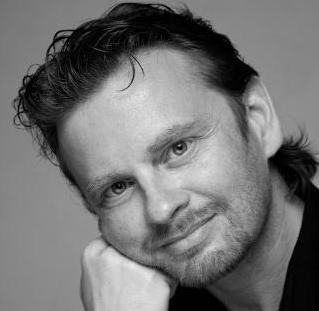
 Fans
of Fabrizio Pigliucci’s music may be surprised to learn that he has a university
education in computer sciences, however, his love for music has deep roots and
it was nurtured early in life. “I grew up in a house that was always filled with
art, thanks to my father who played the guitar. He was also a painter and my
mother wrote poems. During my childhood, I listened to tons of good LPs and
surely in those moments, the first musical schemes started to grow in my mind.”
Fans
of Fabrizio Pigliucci’s music may be surprised to learn that he has a university
education in computer sciences, however, his love for music has deep roots and
it was nurtured early in life. “I grew up in a house that was always filled with
art, thanks to my father who played the guitar. He was also a painter and my
mother wrote poems. During my childhood, I listened to tons of good LPs and
surely in those moments, the first musical schemes started to grow in my mind.”
While his love
for music was growing, so was his love for computers and as he studied piano and
harmony, he began to use the old Commodore 64’s with its three-voices
synthesizer, the Commodore Amiga, the first computer with sampling capabilities
and then he used an Atari with sequencing applications. He says that at
one point, while still in school, he prepared some text sequences and sent them
to what he describes as “an old impact printer” to produce rhythmic sequences
that were too strange for his professors. Today he still makes great use of
software in his creative process. Mr. Pigliucci says he considers that it his
merging of and his affinity for both music and technology that gives him and
edge over others when he is being considered for new music projects.
“Today, the
use of computers for producing music is intensive, for sound creation to
writing, recording, editing and mixing and to have these skills is very
important for me. As a musician and as a technician, I can “sell myself” as the
full package and I can get all of the work, instead of it going to two or three
people. I also have to say thanks to Myspace and Facebook for new ways of
communicating, because it can sometimes (result in) new collaborations.
While at
university, Fabrizio Pigliucci was introduced to Jazz through the renowned
Italian pianist Amedo Tommasi who some may remember as being a member of the
Chet Baker’s band, which recorded the album
Chet Is Back and which also consisted
of Giovanni Tommasso, Franco Mondini, Rene Thomas and Bobby Jaspar.
“Amedeo is a
great Italian pianist who worked with Ennio Morricone and I am proud to have had
the opportunity to study with him! I studied with him to learn some Jazz piano
and more importantly to learn wonderful and interesting Jazz harmony. I began to
listen to Bill Evans, Duke Ellington, John Coltrane, Miles Davis and Keith
Jarrett, however, I cannot be defined as being a Jazz musician,” says Mr.
Pigliucci.
To put things
into perspective and to appreciate the trickle down effect of skill and
experience, to which Fabrizio Pigliucci has been exposed, the Italian composer
and conductor Ennio Morricone, twice received Academy Awards, as well as two
Golden Globes, composed and arranged scores for more than 500 films and
television programs. His body of work includes; Sergio Leone’s
A Fistful of Dollars,
The Good, The Bad and the Ugly,
Once Upon A Time In America, Brian De
Palma’s
The Untouchables and
Mission To Mars, Roland Joffe’s
The Mission, Oliver Stone’s
U Turn and Giuseppe Tornatore’s
Cinema Paradiso.
“Paolo Vivaldi
is a friend and he is a great composer and he was one of my most important
teachers. I studied composing, harmony, orchestration and the link between music
and images. Then I started to work with him on soundtracks and I eventually
collaborated with him as an arranger and orchestrator,” says Fabrizio Pigliucci.
Noting the
importance of music to a film, Mr. Pigliucci asks, “Have you ever seen a film,
before the soundtrack’s realization? It usually, with very few exceptions, seems
empty, strangely silent and it has less emotional peaks.
A single note can deeply affect the colors of a scene. From my very
beginning as a musician, I have always thought of music as a link to images. It
is extraordinarily expressive. For me, a soundtrack is the most interesting way
to do music and it is the best way to express my creativity.”
Fabrizio
Pigliucci’s film credits include; “Titoli di Testa,” a blending of orchestral
music and electronic sounds, to create the title track for the suspense movie
Non Aver Paura, several orchestral
pieces for the film
Thy Kingdome Come,
and his compositions can be heard in the 2007 film
Ghost Son, starring Laura Harring,
John Hannah and Pete Postlethwaite. Mr. Pigliucci also wrote the title song “Fly
On The Beach,” for another 2007 film, the comedy
Sweet, Sweet Marja, starring popular
Sicilian actress Maria Grazia Cucinotta, who also appeared in
Il Postino and the James Bond movie
The World Is Not Enough.
A medley of Fabrizio Pigliucci’s music credits from his film work, appear
under the title
Suspense Atmospheres
on his myspace site.
The music of
Fabrizio Pigliucci is finally getting the recognition that it deserves outside
of